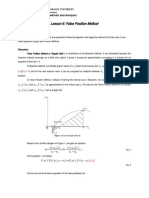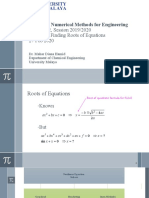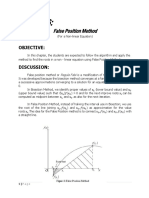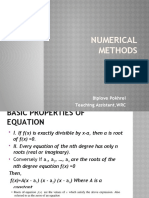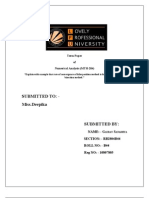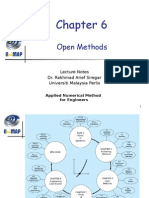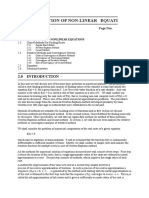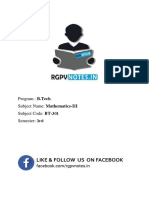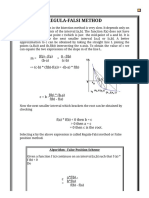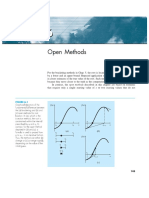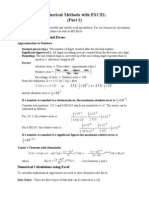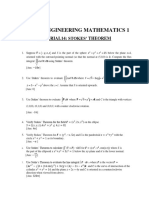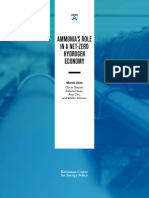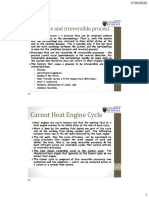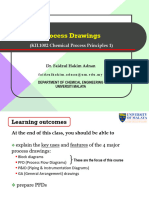0% found this document useful (0 votes)
23 views19 pagesLecture 3
The document describes the false-position method for finding roots of equations numerically. It gives the steps of the method which are to find a range that brackets a root, make a linear interpolation in this range, evaluate the function at the interpolated point and narrow the range based on the sign of the function value. It also gives an example of applying the method to find a root.
Uploaded by
haqeemifarhanCopyright
© © All Rights Reserved
We take content rights seriously. If you suspect this is your content, claim it here.
Available Formats
Download as PDF, TXT or read online on Scribd
0% found this document useful (0 votes)
23 views19 pagesLecture 3
The document describes the false-position method for finding roots of equations numerically. It gives the steps of the method which are to find a range that brackets a root, make a linear interpolation in this range, evaluate the function at the interpolated point and narrow the range based on the sign of the function value. It also gives an example of applying the method to find a root.
Uploaded by
haqeemifarhanCopyright
© © All Rights Reserved
We take content rights seriously. If you suspect this is your content, claim it here.
Available Formats
Download as PDF, TXT or read online on Scribd
/ 19


